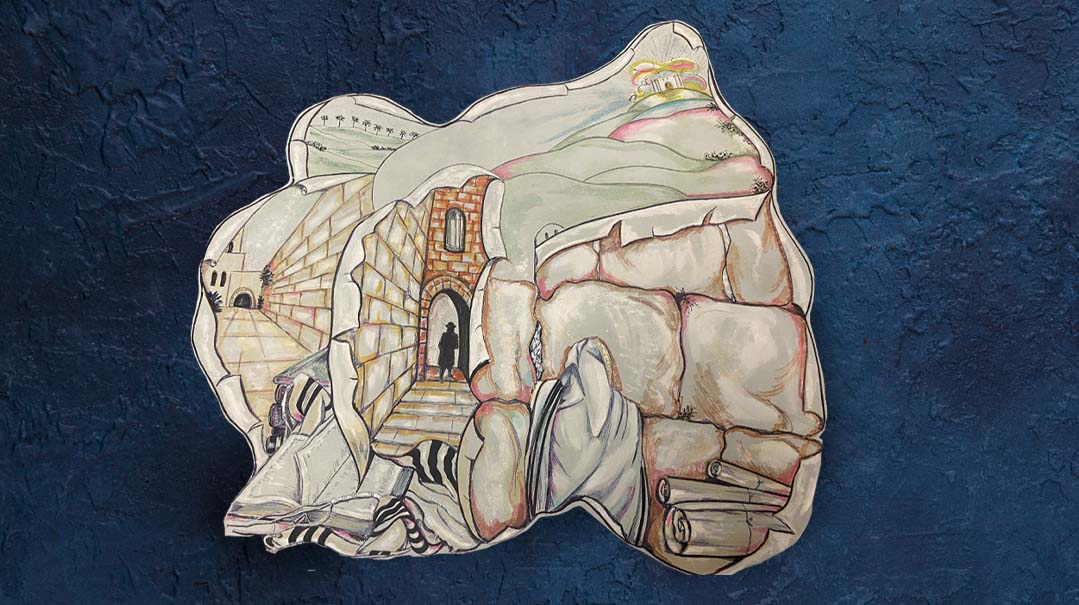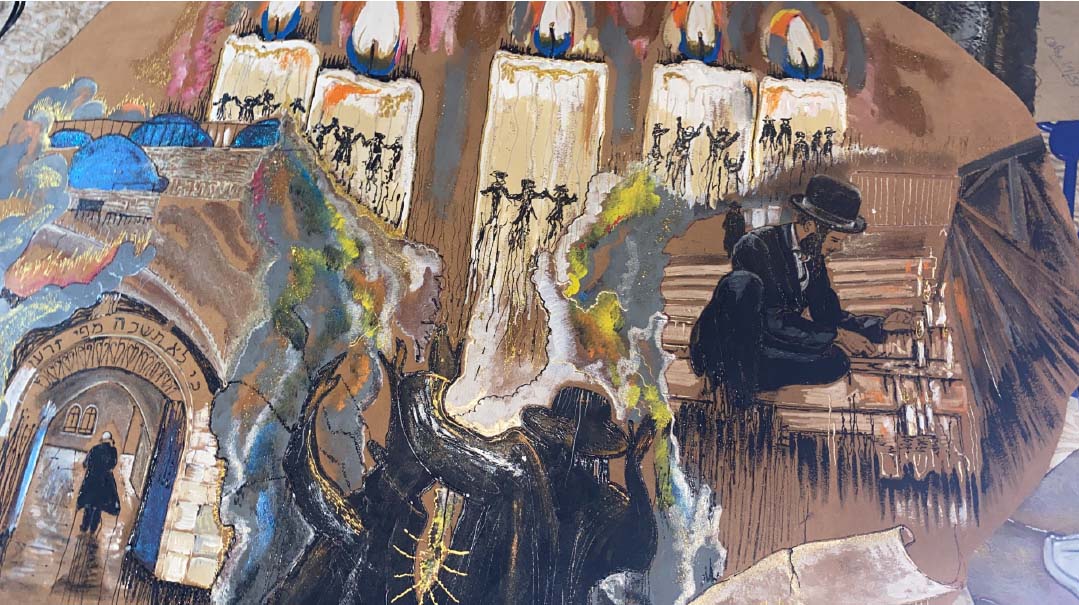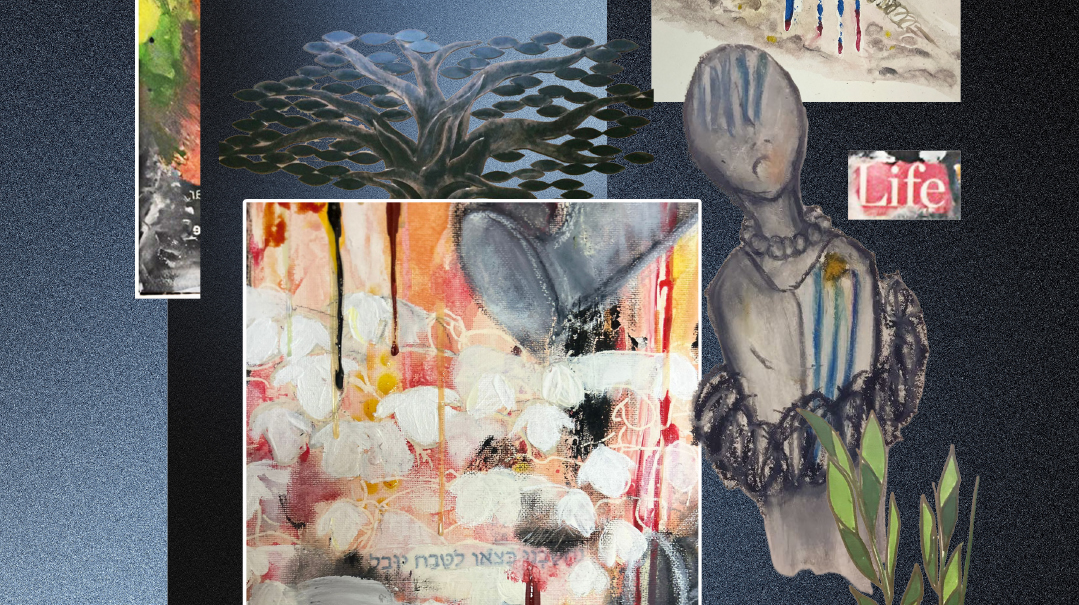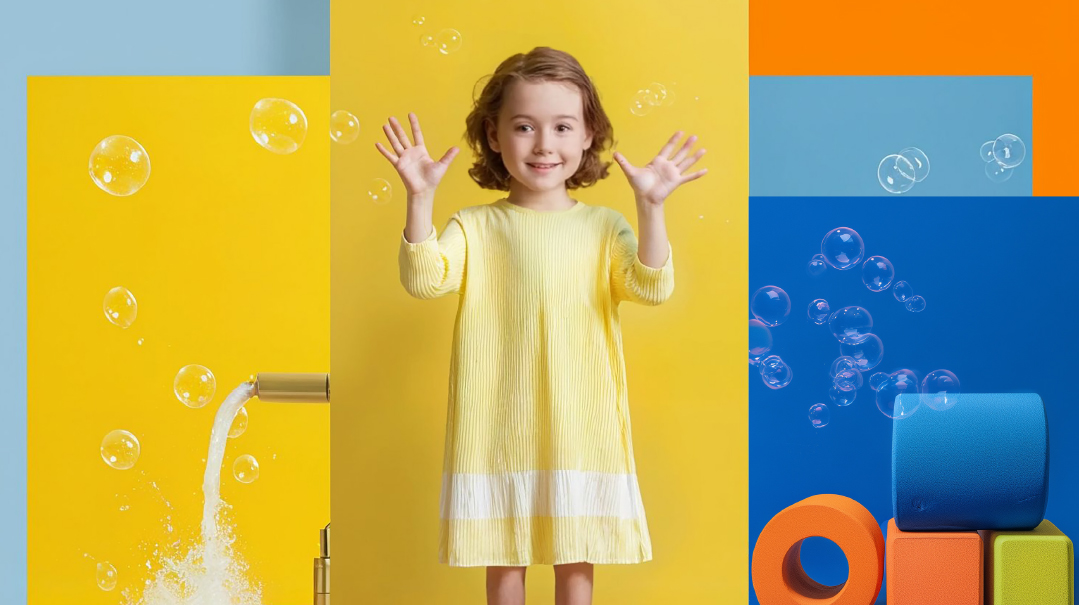Meet Shoshana Schwinger Rubinstein

Shoshana Schwinger Rubinstein brings color to the canvas of life

Shoshana Schwinger Rubinstein knows life’s palette doesn’t only have bright, cheery colors, but she still sees beauty everywhere — in nature, in the people around her, and in life itself. Throughout her decades of teaching Manchester children, she’s been striving to impart both artistic techniques and her belief in them
Art has been my world for as long as I can remember. It’s a gift passed on by my talented father, Rav Kasriel Dovid Kaplan ztz”l, though he was known much more for his gadlus in Torah and joie de vivre than his latent artistic talent. From as young as five, I’ve been constantly fascinated by the world around me: by nature, by color, by emotion, by nuance, like the creases in a tallis or the intricate hues of autumn. While an optimist by nature, life has taken me on many rides — some joyful and some bumpier ones — and through it all, art has been my constant. To date, I have enough work to fill multiple art galleries and plaster the walls of my home.
I started teaching art at around age 16 when I was still a high school student at London’s Lubavitch High School. In the UK, art as a subject is traditionally compulsory in the first two years of high school, and then becomes an elective chosen by a percentage of students in the upper years. The staff would notice me helping out classmates, and sometimes also the younger girls, so when the art teacher was absent, they asked me to stand in. I’ve been teaching — and producing art — ever since.
Everyone’s an Artist
I thrive on experimenting, so I’ll use practically any medium I can get my hands on: kitchen sponges, scraps of linen and leather, ballpoint ink, and of course a whole array of paints and brushes.
Thirty-five years in the teaching field have taught me that everyone can produce something. Of course you’ll always have those who are naturally more artistically inclined, but what with sponge painting, dragging, paint pouring, or another such forgiving method, anyone can learn art if they want to. Sometimes I’ll even take ripped artwork from frustrated students and arrange and layer it to help them produce something else that’s beautiful; you wouldn’t even know that anything else was at play.

Inspiration Everywhere
Two years ago, on a family trip to Barcelona, I visited the works of the famed Spanish artist Pablo Picasso, and it occurred to me, I’m like him. Picasso kept changing his style to reflect different eras in his life, and I’m constantly adapting my style based on the things I see around me.
Once, at a Simchas Beis Hashoeivah, I was so stirred by the fire, the energy, the effervescence, that I started painting pictures of chassidim, demonstrating different movement and emotion. On a trip to Eretz Yisrael, I shot pictures of the Kosel, then experimented with different colors and positioning to satisfy my imagination for endless possibilities. There’s beauty to be seen in everything — in a world permeated with niflaos haBorei, your Yiddishkeit is naturally strengthened.
There was the time I was at a yard sale and met a retailer of handbags and purses who was also selling random scraps of leather, perfect fodder for my passion to experiment. Hence began an era of leather painting.
Then there was the silk shirt I bought, which I cut into pieces and used in place of canvas.
Paper, Pens, and a Promise
Back in 1986, when my husband of a few years fell ill, I took to using just paper and ink for a while. I was also busy raising my kids at the time and didn’t have the headspace or the energy to look for new inspiration or think about buying different materials. I’d sit in the hospital for hours, with my trusty paper and pen, producing a whole series of gedolim portraits, now one of my most popular collections. When I do gedolim pictures, I read up a lot, biographies, articles, so I can incorporate everything I know about the person into the painting.
In those early days of my husband’s illness, we lived two doors away from Rav Yehudah Zev Segal ztz”l, the Manchester Rosh Yeshivah, and I’d often go to him for brachos and chizuk. In one instance, he gave me a brachah that my husband and I would merit to marry off all our children together, which meant that my husband would go on to live many more years.
In the 20 years that followed until his passing, my husband was sick with four brain tumors — and we married off all but the two children born after the Rav’s brachah. During that difficult time, I held on with the assurance of the Rav’s words and my art. My art took me to another world; it was my haven.
After my husband was niftar seven years ago, I decided I wouldn’t let myself sink; I would climb this mountain, put something special into my life to look forward to every day. Surelle Worch, another neighbor of mine and my role model, who lost her husband when she had ten kids and her youngest was a baby, used to tell me, “You gotta roll along with the bumps.”
I’d go on walks, on shopping trips… but mostly I painted. A while later, Surelle also passed away from illness. But her words remain my modus operandi: Life is what you make of it.
A couple of years ago, when I remarried, a friend commented on how challenging I might find it. I said, “Listen, you may be right, but we don’t know, and it’s not what I’d like to focus on now. Right now, I just want to be excited, I want to look forward to this next stage.”
Now I can say I’m so truly blessed that my new husband is so sensitive to my circumstances, choosing to this day to sit at the opposite end of the table where my first husband Chaim would sit, and being there for my children and grandkids who adore him like a grandfather.
Craving Connection
People ask me why I don’t sell more of my work. The short answer is I don’t know the first thing about marketing. I don’t have a website or barely any online presence for that matter, and I’m fine with that. I’m very connected to my work and care deeply about sharing my inspiration with people who show genuine interest and who’ll appreciate it.
I do take pieces with me wherever I go, and they’re always sold, often to Jewish but non-religious buyers who know little about the meaning of my work, but who seem drawn. Like the time I met a non-frum couple in a hotel on a trip to Scotland, who were so taken by some of my gedolim drawings that they bought a piece of the Lubavitcher Rebbe, and another painting, on the spot, without an inkling of who the rebbes were.
Fame, even money, doesn’t talk to me; I get excited knowing that I’ve helped people connect to their roots, connect to themselves, and for the most part I’m just happy to produce art for its own sake and hold onto my work until I bump into the right moment or person.
I’ve turned down offers to present on BBC News and to teach art at the secular Manchester College (they heard about me through my work at Beis Sarah Schenirer Seminary whose vocational qualifications are granted through the Manchester College).
But offer me any job in the community, setting up a chuppah or dinner reception, a paint night with seniors, a mural for a center for children with special needs, an art class at my home, and I’ll be off with it, because I know I’m making a difference I care about. The excitement and the shining faces of those sometimes less privileged than me gives me more pleasure than anything else.

Embrace the Process
New ideas for my art are generated by things I see, materials I come across, conversations with my students that often reach high intensity, but also by tragedies that strike my heart. When the Meron story broke last year, there was so much loss, and grief, and pain everywhere, that I needed to direct it somewhere, for myself, for my friend and colleague Esther Bergman who lost her son, for the entire nation who was suffering.
Those were the makings of my Meron piece, and the sense of achievement I felt afterward was huge. Like with much of my work, I don’t know yet what I want to do with it; I’m okay holding onto it until something comes up. The process is what fuels me; results are a nice by-product, but not the force that drives me.
And that’s what I try to inculcate into my students too. Process isn’t a popular selling point in 2022, but if you’re looking for a wholesome way to face life, keep your eye on the goal, but first and foremost embrace the process.
One of my most meaningful possessions…
is my kitchen table! Over the years, I’ve made all my students sign their names on it, in paint or pen or whatever they had handy, and by now it’s layers thick with the hundreds of signatures of Manchester’s children whom I’ve taught in my home.
If I could revisit a period in history…
I’d choose the Victorian era (1837–1901). I’d love to see the architecture, the clothing, the vibe, meet a few gedolim and my grandparents.
If I had more time in my life…
I would just paint. Before lockdown I bought a variety of painting materials so I wouldn’t be stuck without anything to experiment with. It was a good move.
(Originally featured in Family First, Issue 782)
Oops! We could not locate your form.






